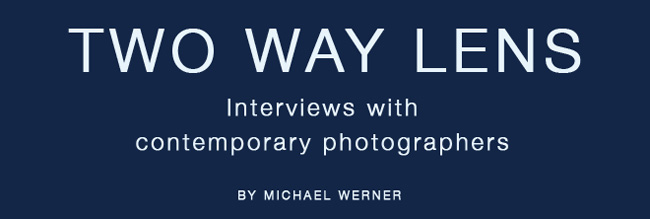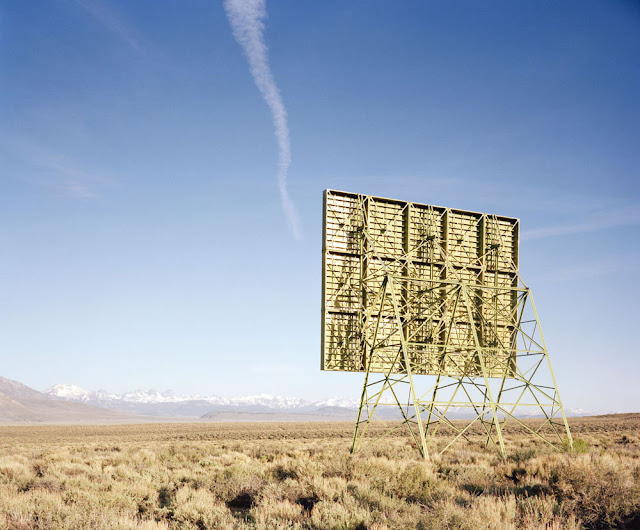MW
What inspired you to start taking photographs, and what have been some of the most important milestones in your career up until now?
KH
In 1975 I was living in New York City and working on a PhD in anthropology at Columbia University. I had been photographing for a few years and it held my attention, but somehow I couldn't yet think of it as a serious pursuit. I thought I was supposed to be an intellectual. At some point, I realized that my attraction both to anthropology and to photography came from a need to observe and comment on the world. I considered how photography could be used in anthropological work, as Margaret Mead had done. But then I realized I didn't want photography to be the handmaiden of something else. I wanted to make photographs as an end in themselves. So I made the leap, quit graduate school and hit the streets with my Nikon F and my one lens, the 35 mm. After working for a few months in the Garment District in New York, trying to make "good" pictures, I had a breakthrough. The congestion and constant activity of the street freed me up, forced me to stop thinking, yield conscious control, and let the shooting happen, quickly and intuitively. I well remember the emotional high I felt while shooting on the street and again later seeing the results. I had found the beginnings of a new identity that came from within. Nothing in my background explained it, but I trusted it.
When I started shooting, there were virtually no academic programs in photography. So I am self-taught like most everybody else who was working back then. The advantage of being self-taught is that you learn things because you absolutely need to know them.
I could chart milestones in any of several ways. But even though I'm much more interested in photographic content and expression than in photographic technique, I decided to think about milestones in terms of photographic equipment and processes.
A change in equipment always stirs me up in a good way. In the late 1970s I found a simple 5 x 7 view camera at a garage sale for $25. and bought it. It was made by the Rochester Camera Company in 1898. It has three shutter options: time, bulb, and instantaneous. It was a while before I could afford a Deardorff and even longer before I could manage a Red Dot Dagor lens to go with it. In the meantime, using that simple 5 x 7, I developed a love for the purity of tone and clarity of detail a large sheet of film can yield. A large format camera has been an important part of my tool kit ever since.
Around 1980, I began shooting color negative film with the large format camera and making color prints. I now know I am passionate about color, and that, in addition to subject, color is what I see first and forms the basis of how I organize pictorial space. Color printing taught me to see and understand the color and the behavior of light. I remember making a white building white, only to see that that threw everything else off. I then realized that the white building was, in fact, not white, because of reflected light.
As a child, I was taken on an epic 3-month car trip through the American West. That trip, I think, established the strong connection to the West I've felt ever since. In 1984 I made my first of many photographic trips the West, bringing along my view camera and my camping gear. That trip was pivotal. I was thrilled by the broad unobstructed vistas, largely unobstructed by trees. In time, I became as intrigued by how people live in the West as by the land itself. I have been exploring various aspects of the cultural and natural landscape of the West ever since.
In 1991, having moved from New York to Los Angeles, I bought the Fuji 6 x 17 panoramic camera because the broad mountainous landscape of the Los Angeles Basin begged for it. I quickly became aware of the aspect ratio of the frame as a prominent compositional element. Many photographers use the panoramic camera to emphasize linear space. My response was the opposite. I worked to break up the linearity of the frame in order to encourage the eye to roam around the broad space. Like the view camera, the Fuji 6 x 17 remains a piece of my basic equipment.
In the last five years, like so many other people, I have started doing my own high end scanning (with the Imacon scanner) and printing (with the Fuji 9880). Having final control of the production process is instructive, rewarding and as it should be, even though it means more time at the computer than I would like.
I just bought the Nikon D 800 DSLR. It is my first high-end digital camera. It will make for a new learning curve, of course. But I'm guessing it also will push me in a new direction. I'm thinking it might even lead me back to the streets of New York all these years later.
MW
How do you approach editing your work, and what advice would you give to others about evaluating their photographs?
KH
Editing one's work is challenging. I think it helps to let the work sit for a while until after the first fervent rush. Edit out anything you doubt, but revisit the rejects once in a while. Maybe you missed something. Let "accidents" inform you. Maybe they'll lead you in a new direction. On the other hand, you may find your first loves don't hold up with time.
Reviewing your work also helps reveal what really interests you, both in terms of content and in terms of how you use light, color, the photographic frame, all of it.
For me, editing means not only selection, but also organizing one's work. I usually create a sequence with a mind to establishing internal coherence, integrity, and the development of an idea or point of view. Bodies of work interest me more than individual images. Images can build on and play off each other to suggest a larger meaning.
I also think writing about one's work is helpful in terms of clarifying what it is you're after and what you think holds a body of work together. A few succinct paragraphs will do.
MW
How do you decide on new projects to work on? Do you always shoot with a concept in mind or do you wait to be inspired as you go?
KH
I love to travel, especially to somewhere I've never been. For me, photography is both an excuse to travel and a way to engage with what I find. So it'd be fair to say that location occurs to me first. I can't entirely anticipate how a place will strike me. Since it's not practical to take a suitcase full of equipment to the other side of the world, I try to have some sort of plan in advance.
In the early years of my shooting in the American West, I wandered around without itinerary, open to anything. But as time went by and I became more familiar with and knowledgeable about the West, I focused on more specific subjects like the Colorado River and Mulholland Drive in Los Angeles. In different ways, each of those two series has to do with water issues in the arid West. I read up on the issues relevant to where I'm shooting and I ask questions wherever I go. What I learn along the way informs what and how I photograph. Content is very important to me. I want my work to be about something, something that I care strongly about. Now I always try to have at least some working concept or idea before embarking on a project, while also being open to what I discover along the way.
Last summer I went to the Dakotas because it was a part of the West I did not know. I knew the land would be flat. Pretty quickly I saw that the land is divided up into sections. I knew this had to be a result of the Homestead Act of 1862 that made parcels of land available to settlers who agreed to "improve" them. The result is that the land forms a kind of grid marked by north-south and east-west running roads, fences, lines of trees, etc. So, to express that historical imprint on the land, I made square images with the horizon line in the center of the frame and often with some other centrally positioned element. I emphasized anything that reinforced the geometry I was experiencing. I think of the resulting photographs as parcels. I had never worked so conceptually, or with such a tight compositional structure. I had arrived at a new approach to photographing the western landscape, one based on what I observed and on an understanding of history.
As with the West, I'd wanted to go to India since I was a child and read about Gandhi. Before I went the first time, I decided I wanted to make fairly close-up, frontal, consensual portraits on the street. I chose the Hasselblad because the square felt like a good portrait format. I chose the 80mm lens because the 50 could make for distortion and the 150 mm would be awkward to hand hold. Also, it would put me farther away from my subject than I wanted to be. Even though I love color and I knew India would be colorful, I chose B/W because I wanted the emphasis to be on the face, not on somebody's hot pink turban.
MW
What ways have you found successful for promoting your work and finding a receptive audience for it?
KH
That's a tough one. It's always important to bear in mind that, as an artist, you're working for yourself. Only when you feel confident you have a body of work that represents you well and has internal integrity is it time to ask for the attention of someone other than your best friend. Better to hold back until you're ready, because you may not get a second chance. Edit carefully. They'll never miss what's not there. At this point, I think self-published books are a good way to show the work. The production process itself forces you to carefully review, edit, and sequence your work.
The Internet, of course, is a wonderful means of researching galleries, museums, art fairs, publishers, and other photographers' work. There's no excuse not to be well informed about an institution or gallery before trying to make a connection. It's important to be able to say why you think your work might be right for this particular venue.
In my experience, I have generally found it easier to get an appointment when I’m from elsewhere. Maybe it creates a sense of importance or urgency to be able to say you're in town for a few days and would like to show work while you're there.
It goes without saying that it helps to have a tough skin when pursuing a career in the arts. Rejection is part of the deal. Often you can learn something or get ideas from people's response to the work, whether you agree with them or not. It's all grist for the mill.
© copyright all images Karen Halverson












